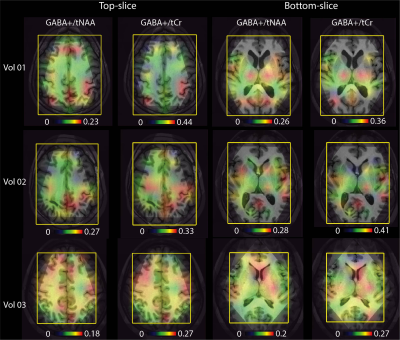Huawei Liu1, Adam Autry1, Duan Xu1, Peder Larson1, and Yan Li1
1Department of Radiology and Biomedical Imaging, University of California, San Francisco, San Francisco, CA, United States
1Department of Radiology and Biomedical Imaging, University of California, San Francisco, San Francisco, CA, United States
By combining atlas-based prescription and adaptive Hadamard pulses, we developed an automatic multi-slice 2D MRSI acquisition method which provided better time-efficiency, SNR efficiency and reproducibility, and may improve 2D MRSI utilization in clinical research.

Figure 1. The diagram for double-band MRSI acquisition with atlas prescription and adaptive Hadamard pulses. A special atlas template was designed to cover superior and deep gray matter regions. After prescription, Hadamard pulses were automatically generated to excite top slice and bottom slice in S/I direction. Finally, 2D MRSI can be reconstructed from a two-echo Hadamard-encoded acquisition.

